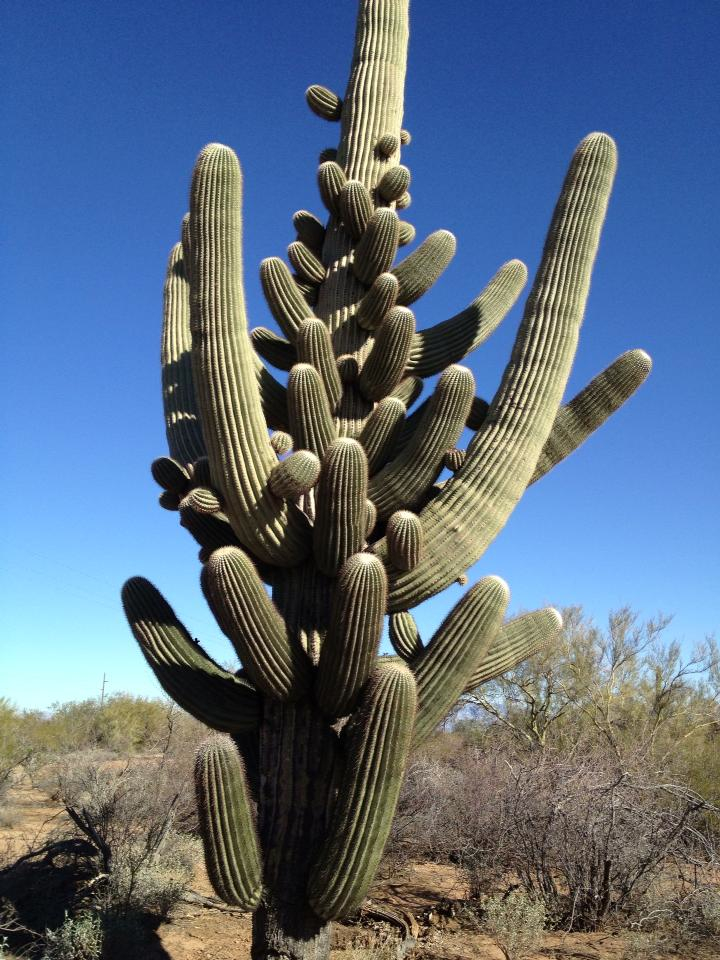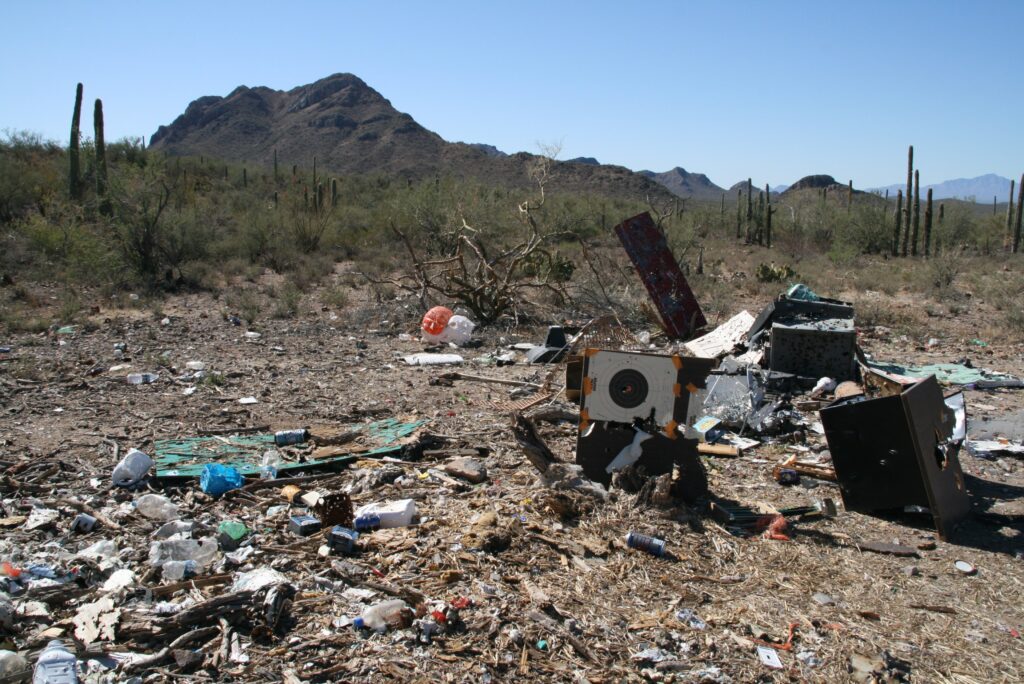Threats
The BLM manages about 245 million acres of land in the U.S. Only about 4% of these lands (10 million acres) are managed as national monuments. While national monuments are considered protected areas because they have more regulations relating to their management, they each have their own threats. Listed below are some of the most challenging threats to Ironwood Forest National Monument in no particular order.
Driving on undesignated routes
To help protect the beauty and ecological integrity of Ironwood Forest National Monument, vehicles are only allowed on established routes. Driving in washes, making new spur roads, creating new campsites, or any other off-route activity can seriously damage this special landscape. The desert environment can seem harsh, but with little rain, restoration is slow. Illegal roads and off-route activity can kill sensitive species like desert tortoises and scar the landscape for decades.
Buffelgrass and other invasive species
Buffelgrass is an invasive species that grows prolifically by spreading at a rate of ten to one- where you have one plant, ten will seed and grow the next season, and one hundred the next, etc. Buffelgrass has proven to decrease plant species diversity in native habitats.
Buffelgrass also increases the frequency of fires and burns much faster and hotter than the Sonoran Desert flora, creating a serious threat to native species. Fueled by buffelgrass, these hot burning wildfires destroy trees and cactus.
Southern Arizona has entered a new stage in the fight against buffelgrass. The Southern Arizona Buffelgrass Coordination Center (SABCC) handed over its responsibilities to the Arizona-Sonora Desert Museum, which is strongly positioned to wage a long-term battle against this highly invasive grass.


Recreational shooting
Recreational shooting is not allowed within the IFNM. Reckless shooting has caused damage to important archeological sites (petroglyphs and pictographs), as well as saguaro cacti, ironwood trees, and other native vegetation. Before shooting was banned by the BLM in 2014 through a public input process, Friends of Ironwood Forest volunteers and BLM staff had to remove thousands of pounds of discarded targets and shell casings. To learn more see this BLM webpage about recreational shooting.
Woodcutting
In Mexico, woodcutting causes a 17% reduction in ironwood’s dominance in the areas studied. The demand for wood is strong motivation for individuals to travel across the U.S. border to cut ironwood from the IFNM and other protected areas such as the Organ Pipe Cactus National Monument.
Other impacts threaten ironwood habitat on both sides of the border, especially habitat fragmentation due to the rapid growth of cities such as Tucson, Yuma, Phoenix, Hermosillo and Mexicali, and the conversion of ironwood habitat to agricultural lands.
Migrant traffic
Undocumented immigrant and related vehicle traffic damages the landscape by creating new paths and roads. This traffic also creates a threat to wildlife, including bighorn sheep, that travel through the area and use the washes as routes. In addition, undocumented immigrants traveling through the IFNM will leave behind large amounts of trash including clothing, backpacks, and food and water containers.
The IFNM is used by the public for recreation. Although it should be an area where all uses can coexist, many of these threats create obstacles for safe and enjoyable recreational use. The Friends of Ironwood Forest works to reduce the amount and impact of these and other threats, to leave this beautiful land better for future generations to enjoy, through education, volunteer projects and advocacy.
